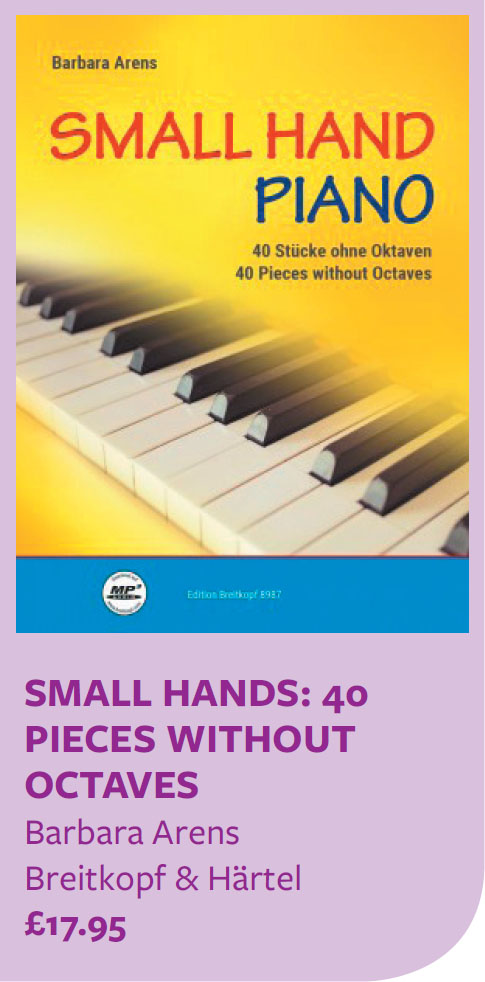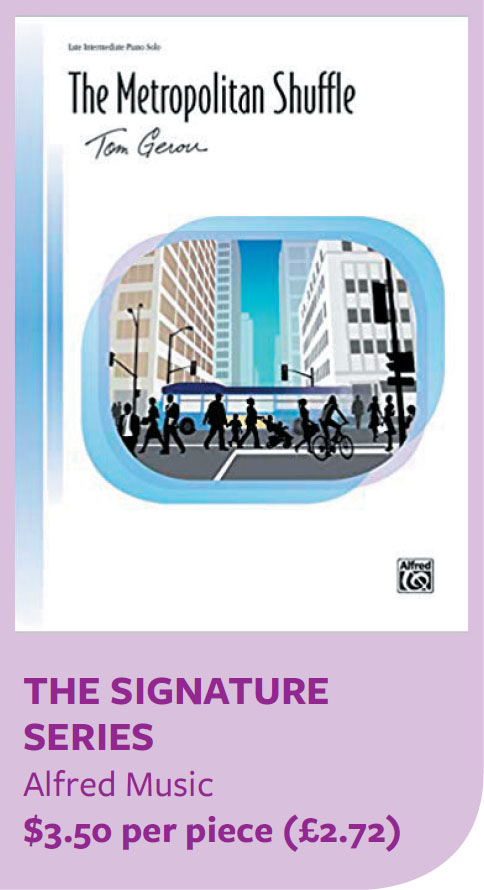
Piano Tales for Alice
The first thing I noticed about Piano Tales for Alice was its size. This is not a lightweight collection, belying the Grade 1 to 3 labels on the front. The collection is made up of 16 pieces, ranging from one to two pages long, together with EVC's now familiar descriptive notes, provided in the back of the publication. From a pedagogical perspective, I love giving young students a substantial collection of music – it embeds expectations, sets an aspirational tone and gives them goals to work towards. And here, the publisher doesn't disappoint. The sumptuous typesetting, the excellent illustrations – strongly reminiscent of John Tenniel's originals – and the ivory, heavyweight paper mean I will want to use this volume again and again.
The first eight pieces of the collection take as their starting point characters and scenes from Alice in Wonderland, with the second half following up with Alice's Adventures Through the Looking-Glass. ‘Cheshire Cat’ has a delightful musical grin, which slowly fades away through a haze of harmony, while the light counterpoint of ‘Tweedledee and Tweedledum’ is particularly charming.
This collection also treads the fine line between instructional and inspirational. Although aimed at Grades 1 to 3, this isn't a book that focuses on progression or attempts to introduce particular piano techniques, but neither is it a scenic wander through a landscape of easy jazz piano. This is a series which will grow with the student, becoming part of their musical experience and firing their musical imaginations.
Small Hands: 40 Pieces Without Octaves
Small Hands by Barbara Arens opens with this missive: ‘having a small hand span on the piano is frustrating. So much piano literature contains octaves or big chords making it difficult or impossible to play’. Having seen some of my students struggle with pieces due to their small hand spans, I sympathise.
Arens collects 40 pieces together, of which half are original compositions. The other half are drawn from a wide net of piano repertoire. The unifying feature is that all the pieces are without octaves; they avoid awkward chords and big jumps, and they generally sit comfortably under the hand.
Of the 20 pieces from existing repertoire, some have been taken from 18th-century sources, transcribed, edited and arranged by Arens, while others are drawn or taken from musical and film scores or the familiar territory of Bach and Satie. The surprising thing for me about this collection was how quickly I forgot about the limited range criterion. The repertoire seems to flow naturally from one piece to the next, with Arens' own pieces fitting in comfortably.
This is a useful collection, which presents a range of challenges to students, while still avoiding uncomfortable stretches across octaves. Although there is a sense of progression across the volume, this is a collection designed to be dipped in and out of rather than slaved over, and it is all the better for it.

The Alfred Music Signature Series
The Signature Series from Alfred Publishing has hit my desk with a riot of colour and fun, and my students are always nagging me to play from it!
The series is a collection of single-piece sheet music for either one piano or piano with optional duet parts, ranging in difficulty from early elementary through late intermediate and on to more difficult repertoire. The collection is presented in a bright, fun art deco packaging with inset cover illustrations, side bars and banners.
The musical content is equally upbeat and jazzy. Early elementary ‘Shapes are Nice’ from Dennis Alexander rollicks along with melody and even has an optional duet part for me to fill in. The lyric, or so the blurb tells me, ‘introduces students to the six principal geometric shapes: circle, triangle, rectangle, rhombus, square, and trapezoid.’ I love the idea of embedding secondary learning in my teaching, and the kids certainly get excited about playing the repertoire.
‘The Metropolitan Shuffle’ from Tom Gerou is a late intermediate piece, without either a duet line or any embedded learning. Although it more than makes up for it with its quirky swinging lines.
‘The Pirates of Dragon's Mouth Cove’ by Nancy Woodin is almost certainly my favourite of this series, with energetic and folky solo lines. This is a late elementary piece and sets expectations for playing at a higher level.
This series captures the imagination of my young students in an unexpected way. Alfred has created a winning formula with the combination of duet lines, vocabulary words, and other nifty ideas to keep students buzzing.









